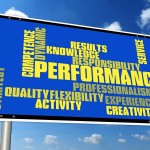by Brian Clark | capability, change, crm, learning and development, learning management systems, LMS, Uncategorized
There is no doubt accounting firms are under pressure for both fees and service delivery. This can be considered disruption. There are a few reasons for this pressure and it will only intensify. Here are some reasons:
* Businesses are questioning the amount of fees they pay annually for compliance services against the perceived value they receive from these services.
* Accounting firms are facing a technology tidal wave that will shift much of the compliance work to ‘bots’ that deliver higher accuracy and cost a fraction of a qualified accountant.
* The complex operating environment facing companies is encouraging them to seek outside expertise to remain competitive and sustainable; unfortunately they rarely look at their accountants to provide such services.
These disruptive changes are compelling proactive firms to focus on developing other capabilities to maintain and grow revenue. The most common focus is on building revenue from advisory services. One would normally think accounting firms are well positioned to delivery advisory services. They may be well positioned, but many lack the competencies needed to uncover opportunities, scope advisory projects and execute the delivery phase for a successful result.
We were engaged to help a firm build an advisory capability without increasing the headcount. Our project including a number of phases that included strategic planning, business model development, behavioural competency assessment, training and coaching. Our process included a small digital transformation with the inclusion of work to improve use of the incumbent information management system, CRM and the introduction of a learning management system, (LMS).
We implemented a learning management system to support our transition strategy as well as sustain competency development across the firm. Below are some of the key outcomes we have achieved thus far with the LMS.
* Communities of practice to foster sharing of ideas, best practices and content.
* Learning linked to performance reviews and career planning.
* Tracking learning and participation in communities of practice.
* Self-publishing content using standard tools like PowerPoint, Sway, audio and video.
* Team publishing by practice teams to share with teams in other locations and colleagues.
Our ongoing strategic focus for the LMS includes:
* Eliminate knowledge drain.
* Replicate the learning across the organisation at lower cost.
* Develop individual learning pathways for advisors based on subject matter expertise and market sector focus.
by Brian Clark | Uncategorized
 Are you ever stuck for ideas? Is innovation important you and your organisation? This short article by Simon Martin on the Business 2 Community website offers some excellent techniques to unleash the great ideas you already have.
Are you ever stuck for ideas? Is innovation important you and your organisation? This short article by Simon Martin on the Business 2 Community website offers some excellent techniques to unleash the great ideas you already have.
This article starts with an excellent example of Archimedes solving a problem asked by his king to determine if the royal crown was pure gold. There are also good examples using Steve Jobs and Ingvar Kamprad. The article then offers five methods we can all use to generate new ideas and solve problems. These methods include the brainstorm, the mind map, the forced relationship, the scamper method and the reversed thought.
These methods are adaptable for use by yourself, in pairs or in teams. You can read the article here.
by Brian Clark | DOTS Percepium, Employee Engagement, Innovation, talent retention, Uncategorized
Collaborative informal learning can be called all sorts of names. Community of practice is one term that has been around for a long time and many people know generally what a community of practice is and what it is for. When we install our Percepium LMS for a client the ‘out of the box’ name for the module is ‘Expert Area.’ This can of course be changed but we thought this name was a good alternative that simplified the concept a bit.

We designed the Expert Area to be fully integrated with all of the learning and development features in the LMS environment. This ensures that the community of people engaging with an Expert Area may find social collaboration as well as published learning courses, articles and development pathways.
There is really nothing you cannot do with Expert Areas. The subject matter experts may publish to the LMS and offer both elective and mandatory learning activities. The learning activities may be instructor led or online.
When the Expert Areas module is used across an extended enterprise it becomes a powerful tool to engage prospects, customers, resellers and partners with subject matter experts in your business. The usefulness of this scenario is enormous and here are some ways we have implemented this for our clients:
- Support a culture of excellence by identifying and encouraging people to connect and interact with subject matter experts.
- Training resellers and retailers in new products and services.
- Delivering sales training to people who sell your products and services.
- Encourage prospective clients to engage with subject matter experts and their published collateral to engage in educational marketing and begin the process of relationship development.
- Establish communities of practice that include both internal and external experts. This has had a profound impact on innovation and speed to market for one of our clients in particular.
- Prevent ‘brain drain’ when people leave your organisation for any reason. The Expert Areas encourage the capture of best practices and knowledge.
One of our recent clients have adapted the Expert Area module to support an enterprise wide coaching program. Managers were provided training in conducting and managing coaching and mentoring skills using blended learning delivery. The Expert Areas Module was rebranded to Coaching Portal and users now have access to their coaches and mentors in the learning environment.
We dovetailed this with the Development Plans module and now the coaches have line of sight to both the learning activities of the people they are coaching as well as being able to add new development activities as the coaching process advances.
As we upgrade our existing clients and add new clients to our community, we will learn more innovative ways to use this module in organisations. Expert Areas is an example of how uniquely designed DOTS Percepium LMS is to provide maximum configurability without software bloat.
If you would like to learn more about Communities of Practice, Expert Areas and our latest third generation Learning Management System, please get in touch.
by Brian Clark | Uncategorized
The LMS is by name a ‘management’ tool but this is such an outdated description. A robust modern LMS is a very flexible software platform that can do so much more than simply ‘manage’ learning and development. Let’s look at some ways that your LMS can be leveraged to achieve tangible competitive advantages for your organisation.

- Promote the fact your organisation uses a LMS to offer learning and development opportunities for your people that go beyond mandatory and/or compliance training. By doing this you will attract talented people to your organisation and may help to persuade high quality candidates to choose your organisation over others they are considering.
- Engage prospective employees and recruits early by offering them access to the LMS to undertake learning about your organisation, its culture and its mission. Most learning management systems support multiple external login pages and automated processes. Collect names and emails of persons who visit this site and stay in touch.
- Open the LMS up to subject matter experts in your organisation and support them in creating content to share their expertise with others. You should consider both formal and informal learning developed by experts in your organisation. This will not only be a boost to your learning culture it is also a way to prevent ‘brain drain’ when people leave your organisation. Most people know how to use Microsoft Powerpoint. Check out Microsoft Mix as a way to create high quality SCORM content in Powerpoint without having to learn a new authoring tool. You should also check out Office Sway for content authoring.
- If your LMS supports multiple domains or multi-tenant structures, create learning environments for your resellers, partners and suppliers. Keep these key stakeholders up to date with information about your organisation and its products and services. Using your LMS is far more effective since you will be able to enrol and track persons who need to view your content.
- Develop a Learning Academy that showcases your thought leadership. The learning academy may include e-commerce for some or all courses. We have developed learning academies for clients that have attracted global audiences and translated to increased revenue and strategic partnership opportunities.
- Use your LMS to communicate frequently and effectively with your people. One of the biggest contributors to lack of execution is people not understanding or seeing alignment between their work and the organisation strategy. Create learning modules that explain the strategy and how it applies to persons throughout the organisation. It is important to cater for all learning styles so use graphs, pictures, audio and video. You can easily record senior managers in your organisation explaining strategy, goals and objectives and distribute these using your LMS to support other communication channels. In the LMS you can ask for feedback and track the people and frequency of viewing.
- Utilise your LMS reporting tools to support improved strategic and tactical decision making. An enterprise LMS should have extensive reporting capabilities to deliver data that identifies future skills gaps that may impact your organisation’s ability to meet future requirements. Some of our clients have used predictive data to assemble project teams in a number of areas such as product development, entering new markets and creating new business units. A modern LMS should support integration and data sharing so that it becomes a part of your information architecture and not operating as a ‘island’ with limited strategic value.
by Brian Clark | Employee Engagement, engagement, performance management, Uncategorized
It used to be a joke that if you had a job title change to ‘Special Projects’ you were headed out the back door of your employment. Maybe the joke still lives. However, I have met plenty of very talented problem solvers having a job title the same or similar to ‘Special Projects.’
This tactic requires a bit of a mind shift on the part of some leaders and managers who are wedded to the traditional job description without flexibility. It is time to re-consider how we structure work in our organisations to enable people to more fully utilise their skills, creativity, problem solving and decision making. How do we do this? Projects.
Projects is a big word with a huge spectrum of complexity. For the purposes of this tactic you can control the size, scale and complexity of projects based on your organisation and the people you have on your team. I like this definition of ‘project’ I found when I ‘Googled’ the word,
‘an individual or collaborative enterprise that is carefully planned to achieve a particular aim.’
People at all levels of your organisation can work on a project basis. My clients have struggled at times to structure a position into a project framework. This problem is commonly encountered with jobs involving repetition and reactive work; office administration, personal assistants, reception, manufacturing, warehousing etc. For these types of positions, I recommend looking at option 3 in the list below.
The entire job description is documented as projects –
- Full project descriptions, plans and resources
- Project titles/outcomes are included in the position description and the employee creates the project plan and resources
- Projects are added to the job description based on current skills or skills that are to be developed.
I have included a short list of some of the attributes and benefits to an organisation and its people when the project framework is applied to job descriptions.
- Provides a sense of personal responsibility to be accountable for project outcomes.
- Projects can enable employees in repetitious and/or reactive positions to have a ‘release valve’ to tap into their interests and develop their skills. This is definitely a boredom prevention strategy.
- There is less risk of ‘task’ and ‘focus’ drift with defined tasks, milestones and completion dates.
- Projects are conducive to manager – employee collaboration to address performance hurdles, roadblocks, training needs and other important relationship building interactivity between managers, supervisors and team members.
- Project methodology leaves less room for vagaries in an individual’s or team’s performance.
- Successful execution of projects creates positive momentum in a person’s career and often contributes to a greater sense of meaning about their work.
This tactic can be implemented in a pilot roll out for selected positions within your organisation or for new inductees. By implementing as a pilot you can devote some time to testing and evaluating new work flows, reporting and performance systems. The manager and supervisors impacted by this pilot will likely require some training and coaching to facilitate and support these changes.
If you have the opportunity you should check in with your ‘C’ level and/or senior management to learn how they structure their work. You should find that they are all outcomes focused and often their work plans are very close to project methodology. If this is the case you have a golden opportunity to garner support for this and other engagement tactics.
Would you like to explore this tactic in more detail? Get in touch and we can help you get a plan together.



